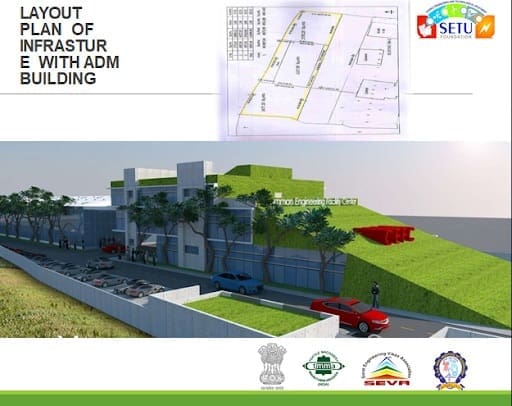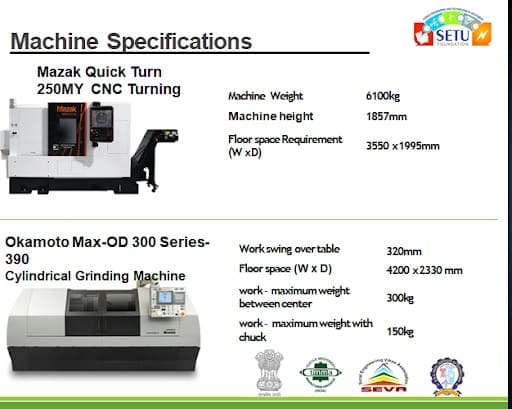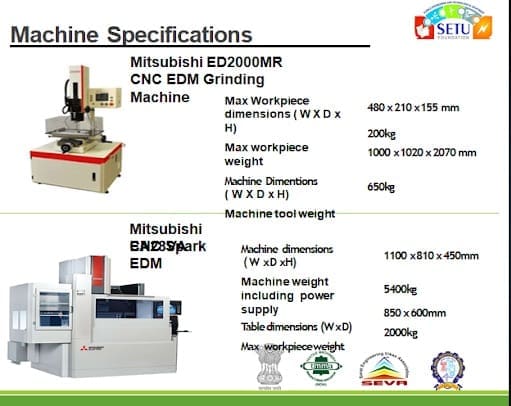Abstract
The Vision of SETU is to contribute in making the Indian Engineering Industry globally competitive. The Mission of SETU is to promote Innovation and Standardisation of all engineering machinery and components; enhance Indian exports and reduce dependency on Imports through Import substitution; and to improve global employability of Indian manpower. The Mission of SETU is to promote Innovation and Standardisation of all engineering machinery and components; enhance Indian exports and reduce dependency on Imports through Import substitution; and to improve global employability of Indian manpower.
Keywords: SETU, CII, FICCI, NDIM, SOP, CEFC
SETU known as Science, Engineering and Technological Upliftment Foundation. A Section 8 Company (Not for Profit Organisation) incorporated under the Companies Act, 2013. Website: www.setufoundation. co.in. SETU Foundation is an SPV developed by Surat Engineering Vikas Association (SEVA), Surat Textile Machinery Manufacturers’ Association (l)
(TMMA), Mumbai along with support of Department of Heavy Industries (DHI), Ministry of Heavy Industries & Public Enterprises, Government of India, Sardar Vallabhbhai Patel Education Society’ (SVPES), Bardoli.

The Origin of SETU goes back to an organisation called SEPA – Surat Engineering Professionals Association, founded in 1996, with the purpose to engage Engineering Professionals into continuous learning and technological updating. The deliberations resulted in the formation of SEVA – Surat Engineering Vikas Association registered Trust in 2008, with the aim of helping Engineering industries adopt new technologies and skill development of its workforce.
While all the leaders of these organisations were also well connected and associated with many other professional and business organisations like Southern Gujarat Chamber of Commerce & Industry, All India Electric Motor Manufacturers Association, Textile Machinery Manufacturers Association of India, All India Lift Upliftment Federation, CII, FICCI, etc., their critical observations and interactions with members of industry and academia made them realise that Indian Engineering Industry lacks global competitiveness due to outdated technologies, unreasonable imports and unsynchronisedemployee skill development. Members of the industry also expressed concern of huge costs to invest in latest working machinery.




This led to a vision to establish a Common Engineering Facility Centre. However, to authenticate the dream and the need, an organised Survey was carried out covering 600 + varied engineering industries. The result was very promising and SEVA took the initiative to establish Science, Engineering and Technological Upliftment Foundation (SETU) in 2016 with the support of the Textile Machinery Manufacturers Association of India. The Sardar Vallabhbhai Patel Education Society joined this initiative by donating 2.56 acer land to establish the Common Engineering Facility Centre. Thus, one organisation after other, led by technocrats, developed SETU Foundation with the solitary vision of making Indian Engineering Industry globally competitive.
1.1. The Approach
We intend to achieve the objectives by becoming a One Point Service Provider to MSMEs & Heavy Industries through: A Common Engineering Facility Centre (CEFC) equipped with world class machineries with latest technology; Strategic tie-ups with Technocrats, Design Software suppliers, Academic Institutes Government departments, Business Associations and related interests.


2. Methodology
2.1. Setu Activity Verticals
SETU intends to achieve the Objectives by establishing/ undertaking activities under the following verticals:
1. Product/Prototype Development Centre
2. Design Centre
3. Skill Development Centre
4. Testing & Calibration Centre
5. Heat Treatment Centre
2.2. Common engineering facility centre
Facilities Planned:
1. World Class Engineering Workshop
2. Training & Conference Facility
3. Product Exhibition Gallery
4. Testing & Calibration Centre
2.3. Strategic tie-ups MoUs with:
1. Surati iLab (Surat intellectual and innovation Laboratory), Surat Municipal Corporation
2. MBI –South Korea
3. IPFC (Intellectual Property Facilitation Centre), Ahmedabad
4. NDIM, (New Delhi Institute of Management) New Delhi
5. Sopan Infotech -Design Centre
6. SEVA MoU with NID/NSIC/MSMEDI/etc.
7. Various Engineering Colleges
8. Industry & Professional Bodies.
2.4. Professional Approach
SETU Foundation has been established to become a fully professional organisation. To ensure that it becomes a System Driven Organisation, we have established the following SOPs:
1. Administration SOP
2. Human Resource Management SOP
3. Accounts & Records Keeping SOP
4. Procurement SOP
We are now in the process of formulating Policies & Guidelines for development of activities under each vertical.
Conclusion
SETU is a social enterprise. The goal is to facilitate Industry and academia, not to generate much financial profit. We intend to provide a platform to raise the standards of the industry and make it globally competitive.
The CEFC is a big step in the direction and is expected to benefit MSEs to utilise the facility and ensure quality products at competitive prices. However, more than the financial gain, focus has been laid on the benefit to academia, industry, and the nation. The nation will be benefited by better productivity, better employability, better quality products, enhanced exports, and less dependence on imports, and will be proud to be one of the most technologically advanced nations.
To become a true superpower, India needs an impactful paradigm shift in upgrading technologies, upgrading skills, upgrading efficiencies and upgrading mindset. SETU aims to take a lead in this process and the CEFC is one of its tools to do so. We need wholehearted support from various stakeholders in this massive endeavour, thus fulfilling our collective Corporate Social Responsibility and Individual Social Responsibility.
References
1) National Science Foundation (US): Directorate for Education, and Human Resources. Shaping the future: New expectations for undergraduate education in science National Science Foundation, Division of Undergraduate Education, 1996.
2) Zheng, Yongnian: Technological empowerment. Stanford University Press, 2022.
3) Zheng, Yongnian: Technological empowerment. Stanford University Press, 2022.
4) Atkins, Daniel Ewell: Revolutionising science and engineering through cyberinfrastructure: Report of the National Science Foundation blue-ribbon advisory panel on cyberinfrastructure. National Science Foundation, 2003.
5) Monyooe, Lebusa, and Steve Ledwaba: “Information and Communication Technologies for Women Empowerment: South Africa’s Unfinished Agenda,” Instructional Technology (2004): 3.

